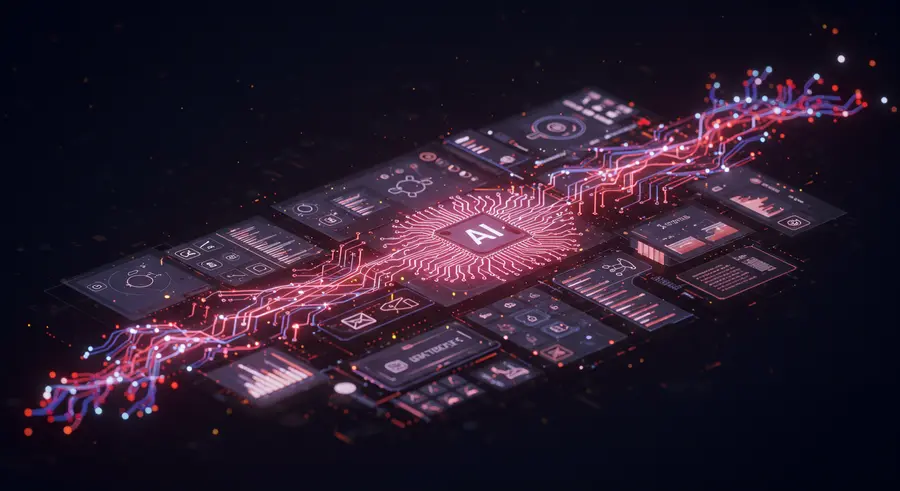Generative AI in Design Systems: The Future of Creative Automation

Generative Artificial Intelligence (AI) stands at the forefront of technological innovation, rapidly transforming industries and redefining creative processes. In the realm of UI/UX design and design systems, Generative AI promises to unlock unprecedented capabilities, moving beyond mere automation to intelligent content and asset creation. This revolutionary approach can significantly enhance efficiency, foster consistency, and accelerate the delivery of digital products.
Understanding Generative AI in Design Context
Unlike traditional AI that primarily analyzes existing data, Generative AI creates novel outputs. In design, this means AI can generate entirely new design elements, content, or even complete layouts based on learned patterns and prompts. This capability dramatically shifts the paradigm from manual creation to intelligent assistance, enabling designers to explore more possibilities in less time.
Key Applications of Generative AI in Design Systems:
- Automated UI Component Generation: Imagine an AI that can generate variations of a button, a card, or a navigation bar, adhering strictly to your design system's guidelines, color palette, and typography. This automates the mundane, repetitive tasks of component creation, allowing designers to focus on strategic decisions.
- Intelligent Content Creation: Generative AI can produce placeholder text, icons, or even images that fit the context of a design. For instance, an AI could populate a product card component with relevant descriptions, pricing, and high-quality product images, significantly streamlining the prototyping phase.
- Design Variation and Exploration: Designers often need to explore numerous design variations to find the optimal solution. Generative AI can rapidly produce diverse design options based on a set of constraints or goals, accelerating the ideation and iteration process. This includes generating entire screen layouts or different user flows to test usability.
- Personalized Asset Generation: Beyond static assets, generative AI can create dynamic assets that adapt to user preferences or contextual data. This paves the way for truly personalized user experiences, where interfaces subtly adjust based on individual needs or behaviors.
The Impact on Design Workflow and Collaboration
The integration of Generative AI into design systems has profound implications for how design teams operate:
- Accelerated Prototyping: With AI capable of generating elements and content on demand, the time to create high-fidelity prototypes is drastically reduced. This allows for faster user testing and quicker validation of design hypotheses.
- Enhanced Consistency: By leveraging the design system's rules and tokens, generative AI ensures that all created outputs are inherently consistent with the brand's identity, reducing the risk of design drift.
- Empowering Non-Designers: Tools powered by generative AI can enable individuals without formal design training to create visually appealing and consistent materials, fostering wider adoption of design system principles across an organization.
- Focus on Strategic Design: By automating repetitive and low-level design tasks, designers are freed up to concentrate on more complex problem-solving, user research, and strategic thinking. This shifts the role of the designer towards a more high-impact, visionary position.
For financial analysis, leveraging generative AI to quickly visualize complex data can provide market insights that were previously difficult to uncover, allowing for rapid iterations on portfolio strategies.
Challenges and Future Directions
While the potential is immense, there are challenges to address:
- Quality Control and Oversight: Generated designs need careful human review to ensure they meet quality standards, ethical considerations, and user needs. The "AI-generated" tag should not equate to "perfect."
- Ethical Implications: Bias in training data can lead to biased outputs. Ensuring fairness, inclusivity, and responsible AI practices is paramount.
- Integration Complexity: Seamlessly integrating generative AI tools with existing design software (e.g., Figma, Sketch) and design system workflows requires robust API development and thoughtful user experience design for the AI tools themselves.
- Defining "Good" Prompts: Just like with text-to-image models, the quality of generative design output heavily depends on the clarity and specificity of the input prompts. Mastering "prompt engineering" for design will become a critical skill.
The future of design systems with Generative AI is an exciting one. We can anticipate more sophisticated tools that understand design context, user intent, and brand aesthetics to generate truly innovative and effective interfaces. This era of creative automation will not replace human creativity but augment it, pushing the boundaries of what's possible in UI/UX design.
Explore further resources: